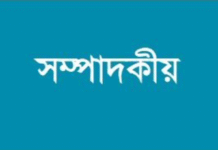Mohammad Hossain
How carefully do you read headlines? Compare the following headlines from The Daily Star, the most popular news daily in Bangladesh: Islamist parties threaten to call hartal (strike) for Dec 20(Dec 15, 2012), and Bam Morcha mulls hartal (strike) for Jan 16 (January 16, 2013). One does not need to delve into rocket science to notice the subtle changes in the messages being broadcast to an unsuspecting audience. The latter headline creates the perception that ‘Bam Morcha’, an alliance of the political left in Bangladesh, is peaceful while in the latter, the stereotypically ‘threatening’ Islamist parties are seemingly planning violent action.
Similar trends are noticeable in leading Bangla news dailies Prothom Alo, Kalerkonto and Jugantor and prominent online English news portals such as bdnews24.com and banglanews24.com among others. Such is the trend among the major media outlets in Bangladesh, a country which has been ranked 129 out of a list 179 countries by the Reporters Without Borders’ Press Freedom Index for 2011-12. The Daily Star and Prothom Alo in particular are seen as harbingers of truth and democracy in the country by many. But how could a guardian of truth flourish in a country rated 129th in terms of press freedom? What exactly could be wrong in Bangladesh?
Outside of such incidents as the recent widely covered Tazreen garments factory fire, which killed as many as 117 garments workers, it appears little is known about this country to much of the world. Yet, Bangladesh was ranked 13th from the bottom in the annual Corruption Perception Index (CPI) for 2012 by Transparency International (TI), only one notch up from its position last year. Human Rights Watch, in its annual report on Bangladesh, quoted Odhikar, a Dhaka-based human rights organisation which found that at least 1,600 people have been victims of extrajudicial killings since 2004. Transparency International Bangladesh further stated that the corruption rate in the law enforcing agencies was the highest, with 77 per cent of service recipients being affected.
However, the icing on the cake is the International War Crimes Tribunal (ICT), set up by the ruling Awami League government to try those accused of war crimes during Bangladesh’s war of independence in 1971. The tribunal has faced repeated critique from investigations conducted by The Economist, among other media outlets. International rights groups, such as Human Rights Watch, have also raised concerns regarding several issues, including witness abductions and theharassment of defence lawyers.
The fact that nine of the 11 defendants accused of war crimes belong to a specific opposition political party, the Bangladesh Jamaat-e-Islami, should have been signal enough that these trials are biased. But the Bangladesh Government and its supporting media outlets have time and again denied this, attempting to prove otherwise by silencing its critics. Towards this end, the opposition-owned private TV channel, Channel-1, was closed in 2010. Mir Quasem Ali, Chief Executive of theDiganta Media Corporation which owns Diganta TV and popular daily newspaper Naya Diganta, both critical of the ruling regime, was arrested as an accused in the war crimes trials. Popular Daily Amar Desh editor Mahmudur Rahman and publisher Hasmat Ali have been sued for exposing incriminating leaked correspondences of one of the tribunal judges, which also formed the basis of The Economist’s investigations. Mahmudur Rahman had previously been arrested and tortured for publishing articles critical of the Awami League. In this manner, media critical of the regime have been suppressed.
The state funded BTV and prominent pro-regime media outlets have been instrumental in promoting a specific image of war criminals – who and what their alleged crimes are. One such endeavor is a two-hour documentary titled “71 er Muktijuddher Itihash” (The History of the ‘71 Liberation War) prepared by television channel ATN Bangla. The documentary has even been presented as evidence in the war crimes trials. Such efforts have been followed by a constant stream of charged rhetoric in the media, creating an unprecedented atmosphere in which those facing trial are presumed guilty until proven otherwise – not the other way round, as the laws of the tribunal dictate. This had reached a point at which the tribunal had to issue an order to caution these media outlets against such practices.
Odhikar, in its 2012 human rights report, states, “According to Articles 38 and 39 of the Constitution of the People’s Republic of Bangladesh, every citizen of the State has the right to organise and participate in peaceful meetings and processions. However, the government has systematically violated this right, provoking confrontation and violence”. Such repressive action by the government is highly condemnable but so is the complicit action of various media outlets which have systematically created wave after wave of misinformation targeting opposition groups, in particular the Bangladesh Jamaat-e-Islami, and ideologically affiliated student movements. Here, we shall investigate two cases which highlight this trend.
A recent event in the news was the arrest of 13 members of the Bangladeshi Women’s Rights Organisation (the Nari Adhikar Shongstha) in Dhaka. Police arrested them in front of the Press Club as they were about to join a press briefing calling for the unconditional release of up to 21 detained female students affiliated with a female student organisation that works to promote Islamic teachings and practice. A detailed report was posted by their lawyer, Barrister Abdur Razzaq, on his Facebook page. One would expect a media outcry denouncing such arrests. However, in a media stunt that could only turn many from the truth, the Daily Star published a dubious onlinereport entitled “13 female Jamaat activists held”. Further muddying the waters, the online edition of banglanews24.com published an even more incriminating account labelled “13 Shibir women held in city”. This title is a blatant misleading fabrication considering Shibir is a male student organisation that is heavily stigmatised by the pro-regime Bangladeshi press and does not include middle aged women such as those arrested.
On 28th January 2013, nationwide clashes occurred between opposition activists of the Islamic party and police as opposition activists demanded the release of their leaders incarcerated under the controversial ICT, and protested targeted state oppression against its members. Up to 50 policemen were injured and ongoing arrests of more than 100 activists have been reported. Reuters published a report headlined, “Scores hurt as Islamists take to Bangladesh streets over tribunal“, providing a backdrop summary that lead to these events. Local newspapers, sensing an opportunity and cashing in on the animosity of the government and its police apparatus, penned complicit condemning reports with their own biased analyses, such as: The Daily Star’s “Jamaat Shibir strike terror”; banglanews24.com’s “Benazir for shooting Shibir activists“; and bdnews24.com’s “Jamaat is a terrorist group: FBCCI“. Such damning evidence of media complicity with government repression of a democratic and registered political party is confounding to say the least. Not only do these recent events explain the stigmatisation of Islamic political groups in Bangladesh, they also map out the nature of the yellow journalism that has gripped the nation’s media.
Under such troubled circumstances in Bangladesh, and just a week after Martin Luther King Day, I feel humbled in reminiscence of that timeless quote of his: “Our lives begin to end the day we become silent about things that matter.” Truth matters. It is time we stand up and demand an end to this systematic blight. Stop yellow journalism.
Source: The Platform










